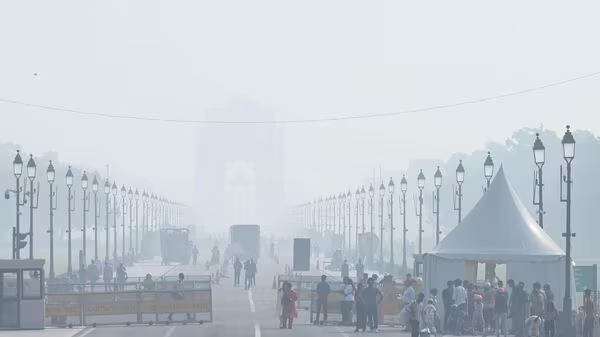
New Delhi: After a brief improvement in air quality due to heavy rainfall over the last few days, Delhi’s Air Quality Index (AQI) has once again fallen into the ‘very poor’ category. The Central Pollution Control Board (CPCB) reported an overall AQI of 223 at 7 a.m. on Sunday.
A light fog covered the city in the morning, with temperatures dropping to 12 degrees Celsius.
CPCB data showed varying AQI levels across different areas of Delhi at 7 a.m.: Okhla Phase 2 recorded 245, Alipur 202, Rohini 271, ITO 243, Ashok Vihar 251, Shadipur 222, Mundka 270, Jahangirpuri 288, Narela 191, DTU 140, R.K. Puram 252, Anand Vihar 287, Pusa 238, and Punjabi Bagh 214.
On Saturday, the air quality had briefly improved to the ‘moderate’ category due to the rains, but current AQI levels still pose health risks, particularly for vulnerable groups.
Delhi experienced 41.2 mm of rainfall in the past 24 hours, marking the highest single-day December rainfall in 101 years, according to the India Meteorological Department (IMD).
In light of the favorable weather conditions, including ongoing rainfall in Delhi-NCR, the Centre’s air quality monitoring panel lifted Stage III measures of the revised Graded Response Action Plan (GRAP) on Friday. The Commission for Air Quality Management (CAQM) recommended this change on Saturday, following predictions of further improvement by the IMD and the Indian Institute of Tropical Meteorology. Stage III restrictions had been in place since December 16.
Despite the temporary relief from rain, the return to a ‘very poor’ AQI underscores the ongoing air quality issues during the winter months. The CPCB categorizes AQI levels from ‘good’ (0-50) to ‘severe plus’ (above 450).
Authorities are advising residents to limit outdoor activities and exercise caution as winter progresses, stressing the importance of ongoing air quality monitoring and preventive measures.
